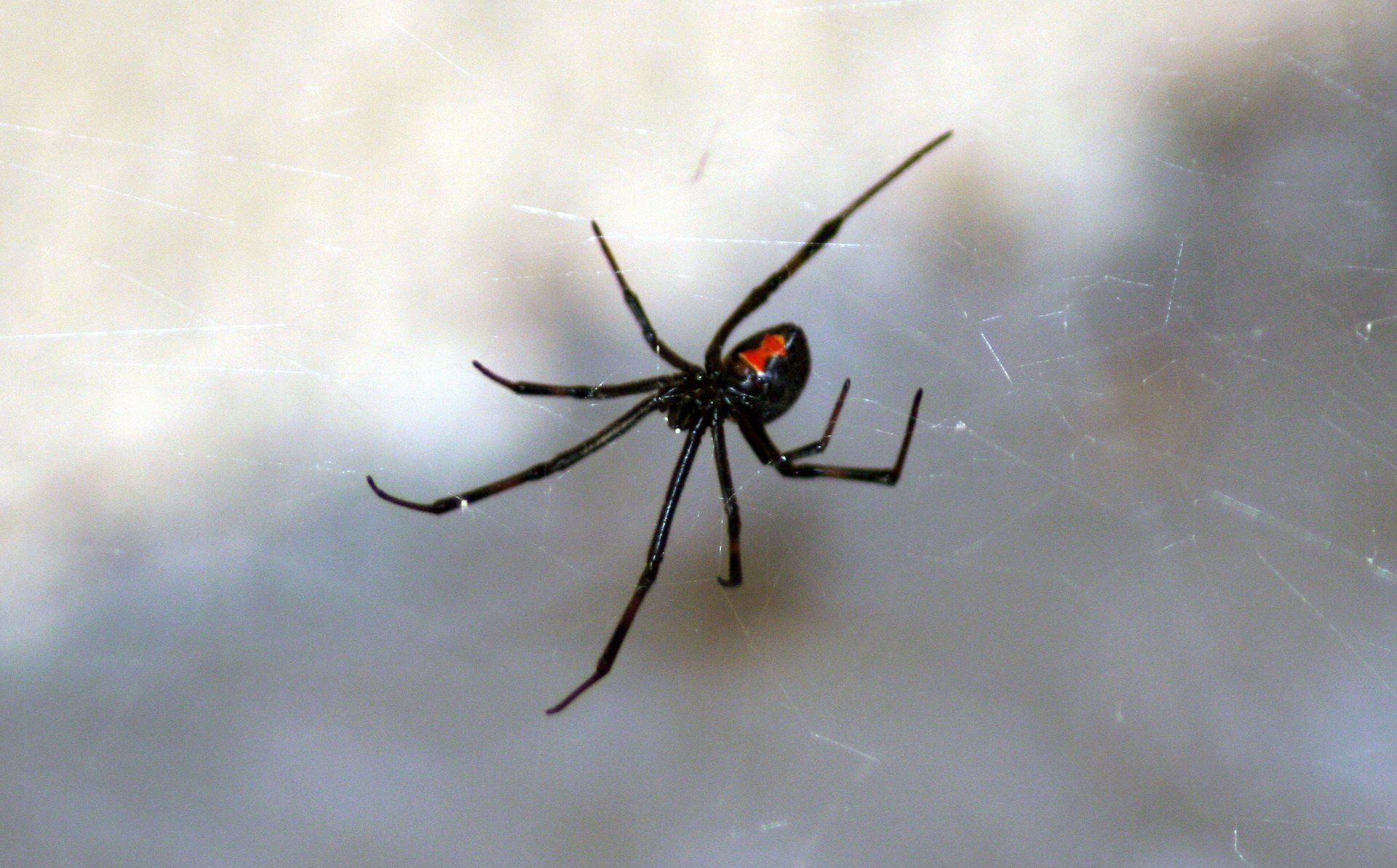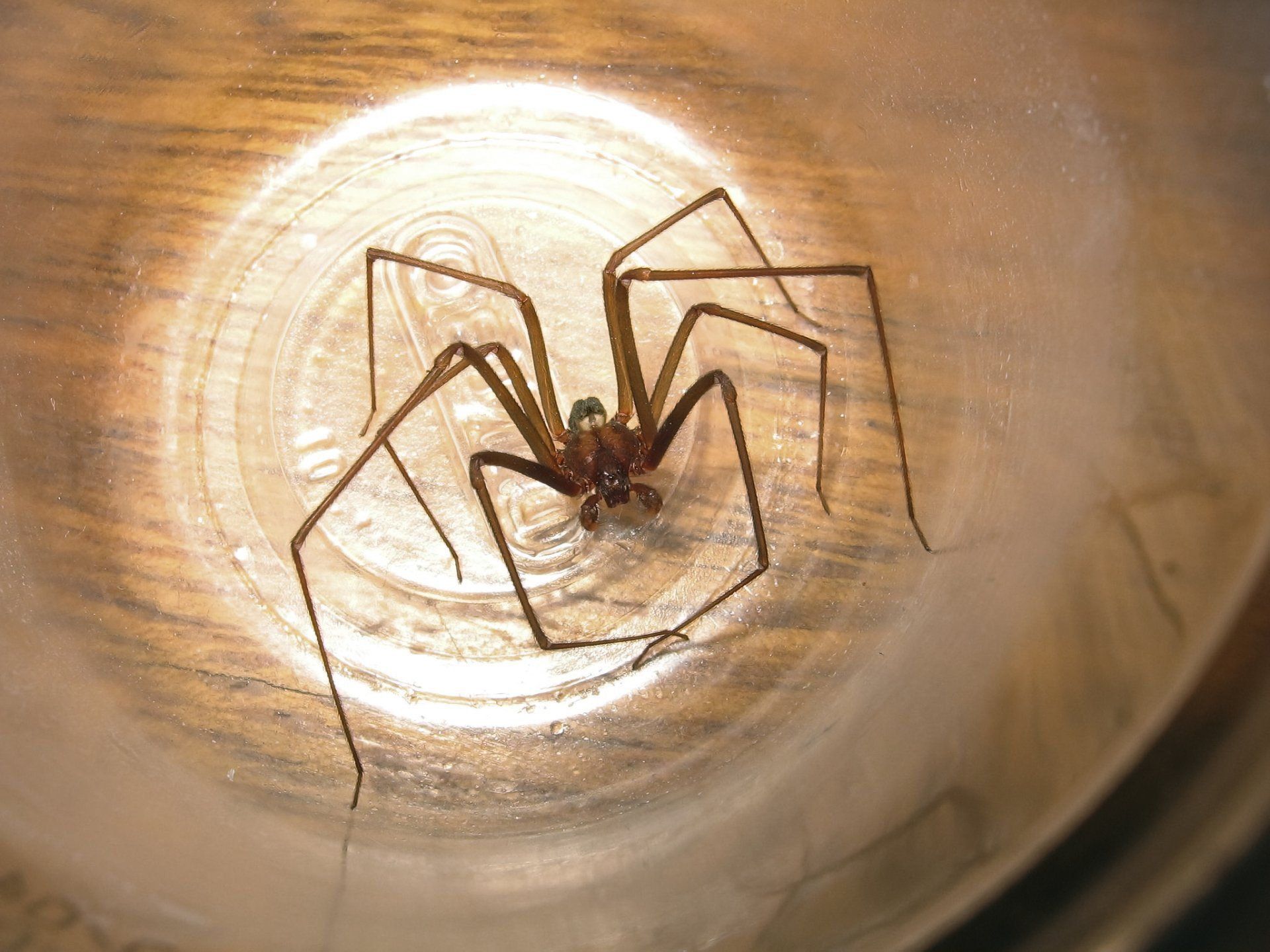Spider Extermination and Control
More than 900 species of spiders are native to Texas, but only a handful are dangerous to humans. Most spiders (like the Yellow Garden Orb-Weaver on the right) are not only harmless but beneficial because they trap and eat insects. An individual spider can eat more than a dozen mosquitoes every day.
Another harmless spider commonly found in Texas is the wolf spider, which is often mistaken for the brown recluse spider (discussed further down on this page).
Spiders eat insects but are not insects themselves. They are members of class Arachnida(which also includes scorpions, ticks, and mites) and order Araneae.
Unlike insects, spiders have eight legs (only six) and two body segments (insects have three). In spiders, the head and thorax are fused into one segment called the cephalothorax; unlike insects, spiders do not have antennae. Most spiders have eight eyes, and all spiders possess poison glands that are used to paralyze their prey, but only a few have venom potent enough to be harmful to humans.

Venomous Spiders Commonly Found In Texas
Although all spiders have poison glands and produce venom to paralyze their prey, only a few produce venom potent enough to be poisonous to humans. Of these, only two species are commonly found in Texas: the black widow spider and the brown recluse spider.
Black Widow Spiders
Female black widow spiders are usually shiny black, with a distinctive hourglass-shaped marking on the underside of the abdomen. The hourglass is usually red but can also be various shades of yellowish-orange. Black widow spiders are about half an inch in size. They are commonly found in dark, secluded, protected places like woodpiles, hollow stumps, outhouses, animal burrows, electrical and mechanical boxes, old tires, rubble, and crawl spaces.
Although venomous, black widow spiders are not particularly aggressive unless they are protecting their egg sac. But they can and will bite if threatened, so black widow spider control should be left to professionals. Control may consist of physical removal, habitat modification, or the application of insecticides to infested areas.
Black widow spider bites usually are not fatal to healthy adults, but medical care should be obtained immediately as a precaution if bitten by a black widow. This is especially important if the person is a child or an older adult, has known allergies to spider bites or insect stings, or has a heart, respiratory, or any other chronic health condition.
In healthy, non-allergic adults, black widow bites usually cause an initial pain that feels like a pin prick. This pain quickly worsens and spreads to the abdomen and back to the bite location. Severe abdominal cramps, nausea, sweating, tremors, and difficulty breathing may also occur and can last several days.
Brown Recluse Spiders
Brown recluse spiders are often called “fiddle backs” because of the violin-shaped markings on their backs. They range in size from one-quarter to three-quarters of an inch in length and are predominantly yellowish-brown in color. They have a dark brown, violin-shaped marking on the top of the cephalothorax (where the legs are attached). They also have six eyes (two in front on two on each side).
Brown recluse spiders build their webs in secluded locations such as dark corners, behind stored objects, in hollow tree stumps, and in maintenance holes and utility tunnels. Unlike most spiders, they derive a significant portion of their diet from scavenging.
Brown recluse spider bites can be severe. In most cases, redness and swelling will occur at the bite site within a few hours after being bitten, sometimes followed by nausea, fever, joint pain, dizziness, general weakness, and restlessness. The skin around the bite site then develops a white, raised blister and begins to die. This is called necrosis, which may spread to surrounding tissue and cause gangrenous ulcers.
Brown recluse bites can be fatal in children, the elderly, and people who are already ill. Even healthy adults can take months to heal and may leave scars and are occasionally fatal. Therefore, anyone bitten by a brown recluse spider should seek medical care immediately.
Control of brown recluse spiders should be left to professional exterminators. Control methods may include physical removal by trapping, habitat modification, and insecticides in affected areas.
Please call us at 817-589-1632 for more information about spider control or any of your pest control needs.
Why wait any longer? Call our professionals for a free quote at 817-903-9109!

Browse Our Website
Contact Information
Phone:
817-903-9109
Email:
Serving the greater Dallas Fort-Worth DFW area with affordable pest control services.








Business Hours
- Monday
- -
- Tuesday
- -
- Wednesday
- -
- Thursday
- -
- Friday
- -
- Saturday
- -
- Sunday
- Closed

